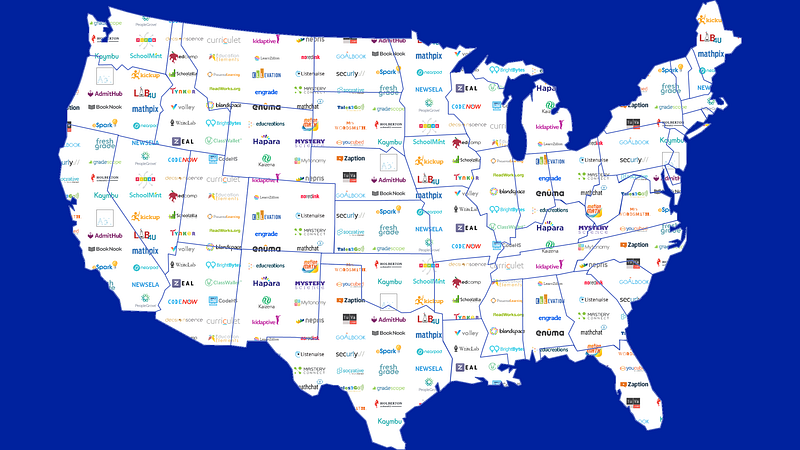

This post is the first in an upcoming series highlighting insights from Reach’s market mapping efforts. As an early stage edtech investor, we care about both the potential financial returns as well as the educational impact of companies we back. As part of our process, we go deep into a space to understand the potential ROI on both dimensions. Market maps help us understand the current landscape related to a specific educational challenge and to explore what solutions are currently available. We seek to understand which models are working, which aren’t, and whether a market-based approach can address the challenge in a novel and more effective way. In the past year, we’ve created a dozen or so maps examining different sectors.
The motivation to create a map emerges organically as we grapple with persistent educational challenges such as college and career success for high-risk students or system interoperability in K-12 districts. We examine downstream educational implications of economic and societal forces, such as the unmet demand for computer science workers or the critical role of social-emotional skills in life success. We identify mature product categories that are ripe for innovation and have a huge potential for impact, such as professional development. Market maps also shed light on the latest educational trends, such as personalized learning or college alternatives, so we can place the trends in the context of the larger ecosystem.
Information included in market maps comes primarily from publicly available sources on the Internet. In some cases, we supplement Internet research with interviews, which may include educators, technology vendors, or other experts. With a base level understanding of the space, we identify pertinent characteristics that differentiate solutions. We use those characteristics to create a framework to visualize relationships between solutions and help us analyze additional solutions we have yet to discover.
Reach finds market mapping immensely valuable. While we’ve shared our maps on an ad hoc basis with fellow investors and edtech entrepreneurs, we are now sharing them with the broader ecosystem. Our hope is to receive feedback and spark dialogue that will build our collective knowledge and improve the ecosystem’s ability to develop solutions to address these persistent challenges.
With that rationale comes a number of caveats regarding our market maps:
- Reach created the maps with our needs in mind, which may be more narrow than what might interest you most.
- The maps are not intended to be exhaustive. Instead, they create a framework for analyzing opportunities and include only representative players in given categories.
- These maps are focused almost exclusively on the US market, which has been the core of Reach’s investment focus so far.
- Technology moves quickly: feature sets change, new players emerge, and companies pivot or go out of business entirely. These market maps represent a snapshot in time.
We’ll be releasing our market maps periodically and updating our list below.
1- College Success: April 2017
2- Post-Secondary Education: October 2016

